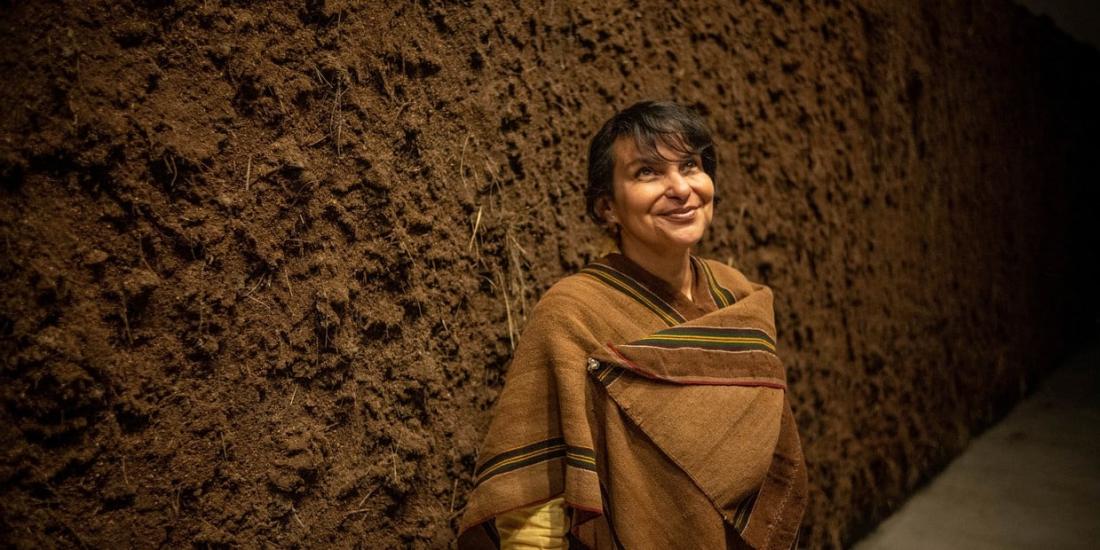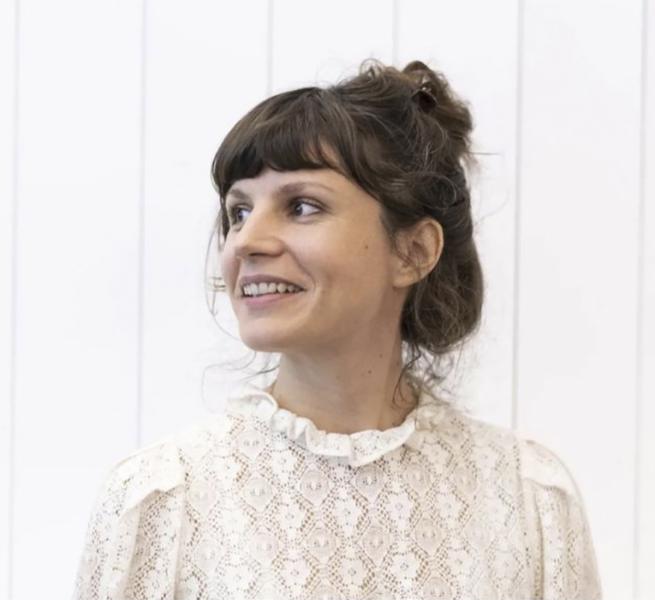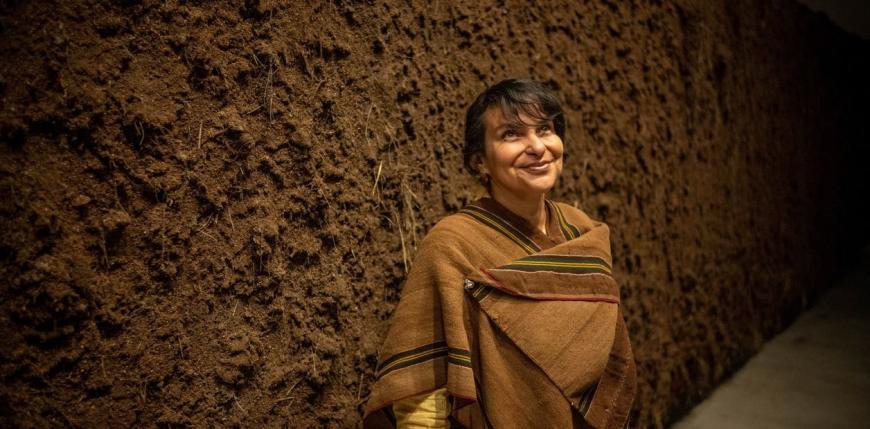Delcy Morelos: discovering local loam and involving international students in the process of her research
Delcy Morelos’ research for the Bozar Monumental 2026 installation has been fueled by her dialogue with BC, a Brussels-based architect company and innovative research lab. BC has introduced Delcy to students from Aachen University, during a course led by Jasper Van Den Linden called “Act of Building”. Once a month during their second semester (April-June), 18 German and international students followed this course based on local and bio-sourced building materials held by BC Studies. Their samples and research formed a “Library of Materials”, which is intended to serve as a basis for artist Delcy Morelos' research and future artwork, made of materials from the Brussels area (loam and various local fibres).
In June 2025, the students presented their research to Delcy Morelos. Their projects took the form of proposals of various combinations of clay mixed with fibres they had found in the area of Brussels. The different groups of students compared the results with combinations of loam with one of the following fibres: Japanese knotweed, cattail, flax, meadow grass, nettle or reed. Delcy Morelos was very inspired by their research and will pick one of their combinations for her 2026 Monumental project in Bozar.
How does architect Jasper Van Den Linden from BC Studies evaluate the collaboration with artist Delcy Morelos until now?
Jasper has shared with us insights on his collaboration with Delcy Morelos:
“Natural materials like earth and fibres are central to both our practice and Delcy Morelos’s work. We share an interest in the expressive potential of these materials, beyond their technical properties.”
“This residency allowed us to take it further by blending local fibres with loam from the Brussels bioregion, deepening our place-based material approach. The opportunity to explore these materials further within the Brussels bio-region, while contributing to a full-scale artwork, is very motivating.”
“As scientists and architects, we often prioritise performance and efficiency. Working with an artist shifts the focus to sensorial experience, narrative, and emotion, requiring a different mindset and a new form of attentiveness to material presence. (…) Instead of focusing only on function, we began to consider how materials feel, smell, and evoke memory. This is crucial to public acceptance and connection.”
Next step in the process: Delcy Morelos and BC Studies will continue working on proposals for the Bozar Horta Hall. Their research should end in December 2025 for a presentation in Horta Hall in June 2026.
Pauline Julier: stepping into the world of astrophysics while inviting scientists to step into her own
Pauline Julier has met her main scientific partner, French astrophysicist Faustine Cantalloube, several times to discuss the plurality of forms of life, and Julier’s fascination about the definition of Life. She invited Faustine to visit her exhibition on the Vassivières island in the centre of France, at the International Centre for Art and Landscape. There, Faustine could dive into the work of Swiss filmmaker Pauline Julier. In this major solo show, Julier brought the visitor to the depths of outer space and propelled them to the surface of Mars or the surface of the Sun.
Meeting in Julier’s exhibition at CIAPV has enabled Pauline and Faustine to take the time to discuss key subjects of interest, with the specific setting of an exhibition bringing them almost out of time. They discussed the birth of the universe, and the importance of knowing about the different geological periods of the Earth, before the Holocene in which we live.
For Faustine, searching for the definition of Life is interesting too. Depending on the discipline you’re looking from, the answer will be completely different. Besides, people are obsessed by the idea of looking for life outside of Earth when so many things are still to be discovered right here on our planet.
In recent research, Pauline Julier tries to understand what interest scientists have for planets outside of our system, and for life outside of our planet. Why are they so interested in that? Faustine shared that she always had a great fascination for big instruments of astrophysics and for the methodology of interpreting images received by telescopes. But above it all, astrophysics makes you travel, make you look away from our own world.
How does astrophysicist Faustine Cantalloube evaluate the collaboration with artist Pauline Julier until now?
“The gap between art and science has been carved out for no reason in the past decades. However, even if we might not share the same vocabulary and jargon, I hope we can bypass this challenge and build something that resonates with as many people as possible.”
“As we got to know each other in a more human way, we quickly realized that we wanted to work in the same way, with a very similar approach to questioning the issues between astronomy and society.”
Alongside her meetups with Faustine Cantalloube, Pauline Julier is also accompanied by curator Filipa Ramos. She follows the ongoing reflections of Pauline Julier in her journey of understanding scientists’ methodologies and questioning their positioning. She helps Pauline Julier translate her views into philosophical and metaphorical concepts.
This unique programme is co-funded by the Creative Europe Programme of the European Union.
#Studiotopia #ArtScience #ArtandEcology


